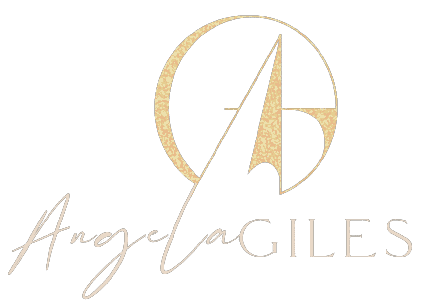We may earn money or products from the companies mentioned in this post.
A well-designed landing page can be the cornerstone of successful online business strategies, especially for coaches and online entrepreneurs.
It’s not just a welcome mat. It’s a sophisticated tool in your sales funnel arsenal, capable of guiding potential clients through a journey from curiosity to conversion.

Explore these effective strategies for enhancing your sales funnel through landing pages. Each approach is designed to boost visitor engagement and streamline the conversion process for better results!
Finding it tough to make your landing pages work for your sales funnel? I’m here to help. Book a call with me, and we’ll make a plan that really works for you.
1. Strategically Position Lead Magnets for Micro-Commitments
Instead of immediately presenting a lead magnet at the start of your page, try placing it after you’ve shared some valuable content. This approach plays on the idea of micro-commitments.
It’s based on the understanding that visitors are more likely to engage further if they have already invested their time or effort in what you’ve offered.
For example, you could position a sign-up for a high-value webinar midway through your page. Do this right after providing insightful tips or demonstrating your expertise.
You can also offer a limited-time, free consultation or a brief coaching session. This is especially valuable for service-oriented businesses like coaching, consulting, or financial advising, where personal interaction is critical.
2. Use Behavioral Triggers for Real-Time Personalization
Improve your landing page by using behavioral triggers. These triggers customize the user’s experience based on their actions.
For example, if someone spends a lot of time looking at a specific service you offer, automatically show them a related case study, offer or testimonial. This kind of direct response to a user’s interest can significantly increase their engagement and conversion rates.
Suppose a visitor is browsing a section about weight loss on your landing page. If they spend a while there, the page automatically shows a pop-up with a free weight loss meal plan.
This quick and relevant response directly caters to their interest in weight loss. It grabs their attention better and greatly boosts their chances of engaging with your content.
3. Leverage Progressive Profiling on Forms
Progressive profiling on landing page forms is a technique where you initially ask for only basic information from visitors, like their names and email addresses.
As they return to your site or interact more, the forms evolve to request additional, more detailed information. Initially, start with a simple form, and then, on subsequent visits or interactions, you could add fields to gather more specifics, such as their industry or job title.
As the user continues to engage with your content, you might request further details like their company size or specific challenges they face.
This gradual approach builds a more detailed lead profile over time and enhances user experience by not overwhelming them with too many questions at once.

4. Integrate Interactive Elements for Engagement
Integrating interactive elements on your landing page can significantly boost visitor engagement and add value to their experience.
For instance, a hair care brand could feature a tool where visitors input details about their hair type and concerns. The tool then suggests custom product recommendations, making the experience personal and relevant.
Similarly, a business coach’s landing page might include a quiz about business challenges and strengths. Based on the answers, it recommends specific coaching services, giving potential clients a tailored experience that directly addresses their needs.
5. Optimize for Psychological Triggers
Psychological triggers on your landing page subtly influence visitor behavior and decision-making. These triggers work by tapping into common human instincts and emotions.
Design your landing page to tap into psychological triggers such as scarcity (limited-time offers), authority (showcasing certifications or media mentions), and social proof (detailed customer stories or real-time stats of people taking action).
For instance, you could showcase badges of industry certifications or feature quotes from media coverage, enhancing your credibility.
Moreover, you can include a section with customer testimonials or display a live counter showing how many people have signed up for your service or downloaded your resource.
Finding it tough to make your landing pages work for your sales funnel? I’m here to help. Book a call with me, and we’ll make a plan that really works for you.
6. Create Content Hubs Around Landing Pages
Creating content hubs around your landing page involves developing a variety of content pieces that all link back to your central page.
For example, if your landing page is about a fitness program, you could create blog posts covering different fitness topics, such as nutrition tips, workout routines, and mental wellness in fitness.
Each of these posts would include links directing readers back to your landing page for more comprehensive solutions or program sign-ups.
Furthermore, you could produce how-to videos or informational infographics, each exploring different facets of your program and again leading viewers back to your landing page.
This approach helps in two ways: it makes you more visible online by spreading out different types of content and improves your SEO. This happens because search engines give higher rankings to content that is well-connected or linked together.
7. Integrate Video Content for Higher Engagement
Add video content to increase engagement on your landing page. If you offer digital marketing services, use an explainer video to clearly describe what you do.
This keeps viewers interested and helps explain complex topics more simply.
Also, include short client testimonial videos. Hearing from satisfied customers adds trust and shows the value of your services. You can even show a behind-the-scenes video of your work or coaching sessions, giving a real look into what you offer.

These straightforward video elements make your page more engaging and help potential clients understand and trust your services.
8. Employ Retargeting to Re-engage Visitors
Use retargeting strategies to bring back visitors who didn’t convert on their first visit. Display retargeting ads on your landing page based on the specific sections they engaged with, offering them tailored messages or incentives.
This keeps your brand top-of-mind and provides multiple touchpoints to convert leads into clients. To start retargeting from your landing page, pick a platform like Google Ads or Facebook Pixel and install its tracking code on your page.
This lets you track what visitors are looking at. Then, categorize your visitors based on their actions, like which products they viewed. Create ads tailored to each group, focusing on their interests.
Lastly, launch your retargeting campaigns on the platform and monitor their performance, making adjustments as needed.
9. Use Exit-Intent Technology
Exit-intent pop-ups are designed to detect when a visitor is about to leave a website and display a last-minute message or offer.
For instance, on a skincare business’s landing page, if a visitor moves to exit, a pop-up could emerge offering a discount on their first purchase or a free skincare guide.
This method effectively re-engages visitors who might be leaving due to uncertainty or looking for more information.
You can enhance these pop-ups by including a brief video showcasing your products’ benefits or sharing quick skincare tips.
This adds a dynamic element to the pop-up, making it more engaging. A good strategy is to ensure the pop-up’s content, including the video, is directly relevant to the visitor’s interests and offers real value.
10. Conduct In-depth Analytics and Heatmap Analysis
Regularly analyze your landing page performance using tools like Google Analytics and heatmaps. These tools provide insights into where visitors spend time, what they click on, and where they drop off.
Use this data to make informed adjustments to your page, constantly fine-tuning elements to maximize conversions.
By analyzing bounce rates and conversion funnels, you gain insights into where potential customers may be leaving the funnel prematurely.
Continuously refine your landing page to improve its alignment with your sales funnel strategy and increase conversions as users move closer to their desired actions.

Invest in Your Landing Pages to Improve Your Sales Funnel
Landing pages are crucial for online marketing success. Apply these ten tips, and you’ll turn your landing page into a strong tool for engaging and converting visitors.
Remember, the secret to a standout landing page is constantly testing and fine-tuning it according to your audience’s needs, ensuring it’s a seamless part of your broader sales funnel strategy.
Execute these strategies and watch your business grow with a more effective sales funnel.
Finding it tough to make your landing pages work for your sales funnel? I’m here to help. Book a call with me, and we’ll make a plan that really works for you.


